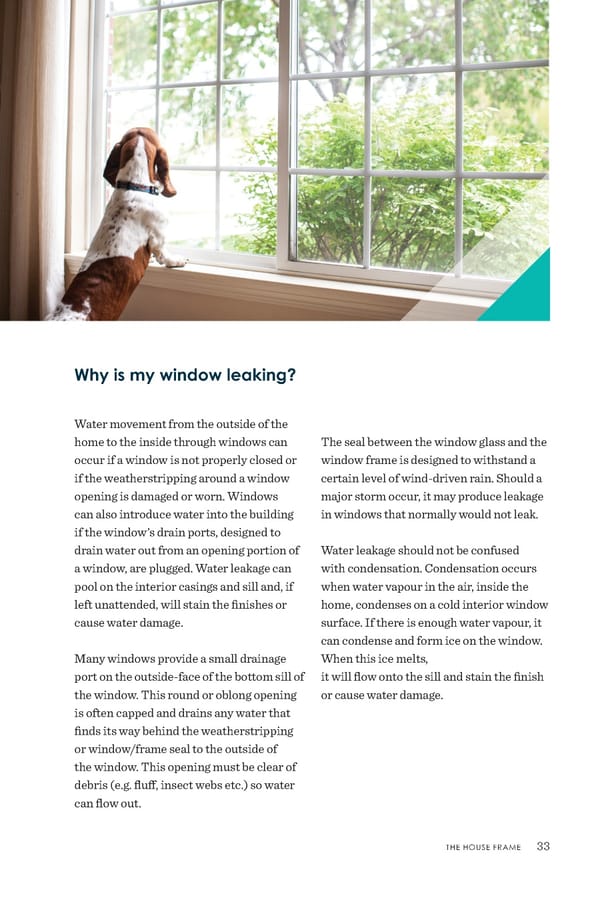Water movement from the outside of the home to the inside through windows can occur if a window is not properly closed or if the weatherstripping around a window opening is damaged or worn. Windows can also introduce water into the building if the window’s drain ports, designed to drain water out from an opening portion of a window, are plugged. Water leakage can pool on the interior casings and sill and, if left unattended, will stain the finishes or cause water damage. Many windows provide a small drainage port on the outside-face of the bottom sill of the window. This round or oblong opening is often capped and drains any water that finds its way behind the weatherstripping or window/frame seal to the outside of the window. This opening must be clear of debris (e.g. fluff, insect webs etc.) so water can flow out. The seal between the window glass and the window frame is designed to withstand a certain level of wind-driven rain. Should a major storm occur, it may produce leakage in windows that normally would not leak. Water leakage should not be confused with condensation. Condensation occurs when water vapour in the air, inside the home, condenses on a cold interior window surface. If there is enough water vapour, it can condense and form ice on the window. When this ice melts, it will flow onto the sill and stain the finish or cause water damage. Why is my window leaking? THE HOUSE FRAME 33
 ANHWP Care & Maintenance Guide 2022 Page 34 Page 36
ANHWP Care & Maintenance Guide 2022 Page 34 Page 36